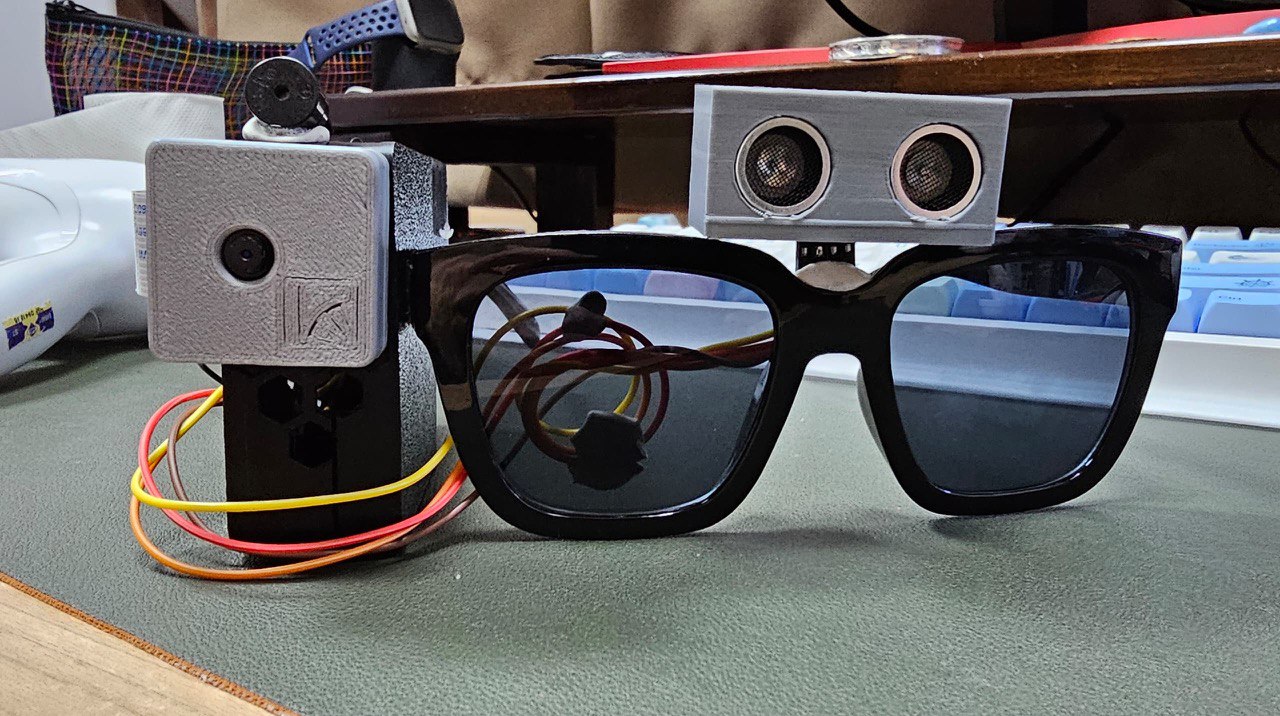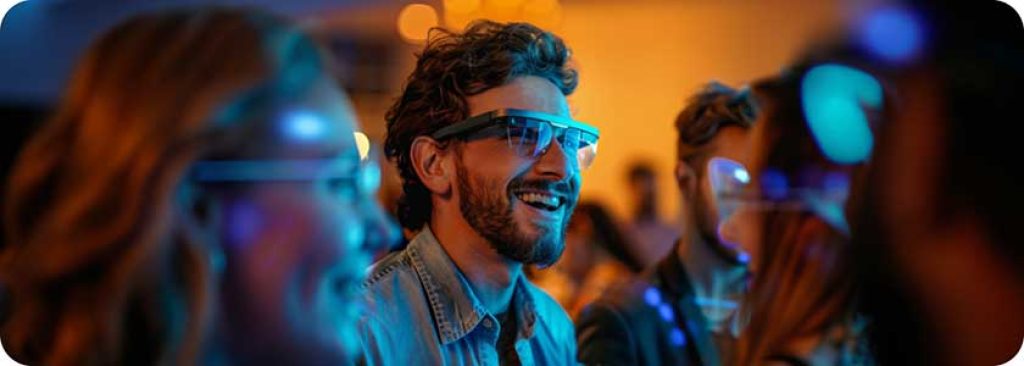Maximizing Efficiency with Screen Readers for the Blind: A Comprehensive Guide
Maximizing Efficiency with Screen Readers for the Blind: A Comprehensive Guide
Blog Article
Enhancing Accessibility Via Assistive Technology for the Blind
The integration of assistive modern technology for the blind represents a crucial improvement in access, fundamentally altering just how individuals navigate their environments and engage with society. From screen readers to cutting-edge wise walking sticks, these devices not just boost self-reliance however also advertise inclusivity in various balls of life. As we check out the diverse types of assistive tools and their concrete effect on day-to-day living, it becomes necessary to take a look at how ongoing technological innovations are improving the landscape of assistance for the blind community. What ramifications do these developments hold for the future of availability?
Overview of Assistive Innovation
Assistive technology describes a variety of tools and software application created to improve the capacities of people with impairments, consisting of those that are aesthetically damaged or blind. This modern technology plays a vital function in advertising independence and enhancing the quality of life for customers. By supplying alternate approaches for accessing info and doing day-to-day jobs, assistive innovation empowers people to navigate their settings more successfully.
The advancement and implementation of assistive technology welcome a variety of principles aimed at promoting accessibility. These principles include user-centered style, which focuses on the demands and choices of the person, and the combination of innovation into daily activities. Such innovations ensure that assistive devices are not only practical yet likewise user-friendly and very easy to utilize.
Furthermore, assistive technology includes a diverse range of solutions, from low-tech options like magnifiers to sophisticated technologies such as screen readers and Braille display screens. The recurring development of this field is driven by the demand to deal with the unique difficulties dealt with by individuals with aesthetic problems (Wearable technology for low vision). As innovation continues to breakthrough, the capacity for boosting availability and promoting inclusivity remains appealing, ultimately adding to a much more fair culture

Sorts Of Assistive Devices
Numerous kinds of assistive gadgets are readily available to support people who are blind or visually damaged, each made to address specific demands and challenges. These tools can be broadly classified right into 3 primary kinds: low-tech, mid-tech, and state-of-the-art solutions.
Low-tech gadgets consist of products such as magnifiers, Braille labels, and tactile maps. These are reasonably simple tools that boost the individual's ability to engage with their setting without requiring complicated technology.
Mid-tech tools frequently involve much more sophisticated features, such as electronic magnifiers and portable Braille note-takers. These devices can provide performances like speech outcome, allowing individuals to gain access to details a lot more successfully.

Impact on Daily Living
The availability of numerous assistive gadgets substantially enhances the lifestyle for people who are blind or visually damaged, influencing their everyday living in extensive go to the website methods. By integrating technologies such as display visitors, Braille displays, and audio summary services right into their routines, users get greater freedom and freedom. These tools facilitate access to information, allowing individuals to perform day-to-day jobs, such as checking out e-mails, navigating public spaces, and delighting in media web content.
Additionally, assistive gadgets encourage people to engage even more completely in social interactions hop over to these guys and neighborhood tasks. The capacity to utilize mobile phones furnished with availability functions permits seamless communication and connection with others. This connection cultivates a feeling of belonging and minimizes feelings of isolation.
In expert settings, assistive modern technology sustains efficiency by enabling people to complete work jobs successfully. Tools like voice recognition software program and specialized magnification gadgets make it possible for users to join the labor force on equal footing with their sighted peers.

Advancements in Innovation
Current technical advancements have actually dramatically transformed the landscape of tools offered for individuals that are blind or aesthetically damaged. The integration of expert system (AI) and artificial intelligence has provided increase to applications that improve navigation and item recognition. As an example, mobile phone apps can now use AI to recognize and define surroundings in real-time, supplying users with useful Go Here contextual information.
Furthermore, developments in haptic innovation have actually caused the advancement of wise canes equipped with sensing units that find barriers and supply responsive responses. This equips users to navigate their environment with boosted confidence and self-reliance. Additionally, innovations in text-to-speech software program and braille screens have actually improved the accessibility of electronic material, allowing for smooth communication with various media.
Wearable modern technologies, such as smart glasses, are additionally making strides in helping visual impairment. As technology continues to develop, the potential for even more transformative tools stays on the horizon.
Future Trends and Innovations
As modern technology rapidly progresses, the future of assistive devices for individuals that are blind holds immense assurance. Advancements in artificial intelligence (AI) and artificial intelligence are poised to change the means blind users connect with their settings. AI-driven applications are being created to enhance things recognition, enabling customers to determine and browse their surroundings with better ease and precision.
In addition, improvements in haptic feedback technology are allowing the creation of tactile maps and navigating aids that provide real-time details through touch. These innovations not only improve mobility yet also foster freedom. Additionally, wearable gadgets geared up with augmented fact (AR) attributes are arising, supplying customers visual information with audio descriptions, thus bridging the space in between the digital and physical globes.
Additionally, the assimilation of smart home modern technology offers brand-new opportunities for ease of access, allowing people to manage their living settings through voice commands or smart device applications. As collaboration in between tech designers and the blind community continues, the concentrate on user-centered layout will make sure that future innovations are customized to satisfy the unique demands of this populace (Wearable technology for low vision). The trajectory of assistive innovation promises a more empowering and inclusive future for individuals that are blind
Verdict
To conclude, assistive modern technology plays an important function in improving availability for people with aesthetic disabilities. The varied range of tools, including screen viewers and smart walking sticks, significantly improves day-to-day living and fosters self-reliance. Constant improvements in modern technology and user-centered layout guarantee that these tools cater properly to the unique requirements of the blind area. As innovations development, enhanced inclusivity and empowerment can be anticipated, ultimately improving the lifestyle for those affected by aesthetic disabilities.
The combination of assistive technology for the blind stands for a pivotal advancement in availability, fundamentally altering just how individuals navigate their environments and engage with culture.Assistive technology refers to a range of devices and software application made to enhance the capacities of individuals with impairments, including those who are blind or visually damaged. Wearable technology for low vision.As technology rapidly progresses, the future of assistive tools for people who are blind holds tremendous pledge. The trajectory of assistive technology assures a more comprehensive and empowering future for individuals who are blind
In conclusion, assistive modern technology plays a vital role in enhancing accessibility for individuals with visual problems.
Report this page